Rooftop greenhouses represent a revolutionary approach to urban agriculture and sustainable living. These elevated growing spaces transform unused rooftop areas into productive, year-round cultivation environments that maximize limited urban space while providing fresh produce and plants. From sleek modern designs to traditional Victorian styles, rooftop greenhouses offer solutions for every aesthetic preference and functional need. These innovative structures combine environmental benefits with practical growing capabilities, creating perfect microclimates for diverse plant varieties while contributing to urban food security and reducing environmental impact.
1. Modern Glass Rooftop Greenhouse

Contemporary rooftop greenhouse designs feature sleek glass panels with minimalist aluminum framing that creates stunning architectural statements. These structures prioritize maximum light transmission through crystal-clear tempered glass walls and roofing, complemented by clean geometric lines and modern ventilation systems. The design typically incorporates automated climate controls, energy-efficient insulation, and sophisticated drainage systems that handle urban weather conditions effectively. Modern glass rooftop greenhouses often feature sliding glass doors, integrated LED supplemental lighting, and smart monitoring systems that track temperature, humidity, and growing conditions remotely. The aesthetic seamlessly blends with contemporary urban architecture while providing optimal growing environments for vegetables, herbs, and ornamental plants throughout all seasons.
2. Geodesic Dome Rooftop Greenhouse

Geodesic dome rooftop greenhouses showcase spherical architecture that maximizes interior space while providing exceptional structural strength against wind and weather. These distinctive dome-shaped structures feature triangular glass or polycarbonate panels arranged in geometric patterns that distribute weight evenly and offer superior light penetration from all angles throughout the day. The curved design creates natural air circulation patterns and optimal temperature distribution, while the spherical shape minimizes surface area exposed to external temperature fluctuations. Geodesic rooftop greenhouses typically include central growing areas with radiating plant beds, vertical growing towers, and integrated water collection systems that capture rainwater for irrigation. The unique architecture makes these greenhouses highly energy-efficient while creating visually striking focal points that complement modern urban landscapes perfectly.
3. Hydroponic Rooftop Greenhouse
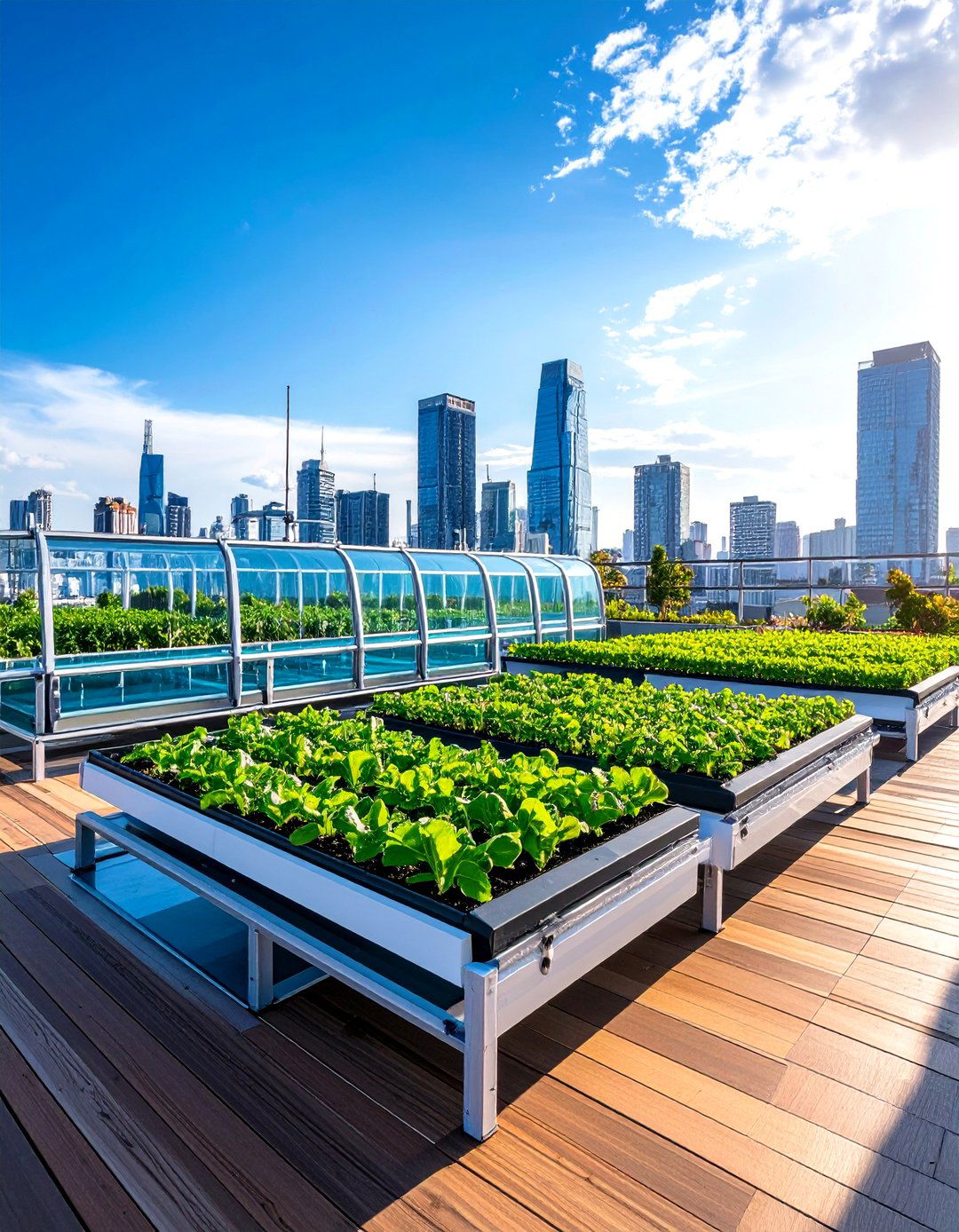
Hydroponic rooftop greenhouses eliminate soil dependency through sophisticated water-based growing systems that deliver precise nutrients directly to plant roots. These advanced facilities feature multiple growing chambers with recirculating nutrient solutions, automated pH monitoring, and controlled-environment agriculture technology that maximizes yields in minimal space. The design incorporates growing channels, deep water culture systems, and nutrient film technique setups that support diverse plant varieties from leafy greens to fruiting vegetables. Hydroponic rooftop greenhouses typically include water filtration systems, automated dosing equipment, and climate control technology that maintains optimal growing conditions year-round. The soil-free approach reduces weight loads on rooftop structures while enabling precise control over plant nutrition, water usage, and growing cycles for maximum productivity and resource efficiency.
4. Vertical Tower Rooftop Greenhouse

Vertical tower rooftop greenhouses maximize growing space through innovative multi-level planting systems that stack plants vertically in tower formations throughout the structure. These space-efficient designs feature rotating or stationary growing towers with integrated irrigation systems that deliver water and nutrients to each plant level systematically. The towers typically accommodate herbs, lettuce, strawberries, and other compact plants in individual growing pockets or hydroponic channels that optimize root development and harvest accessibility. Vertical rooftop greenhouses include automated rotation mechanisms for even light exposure, drip irrigation systems, and modular tower designs that allow flexible configuration based on crop requirements. The vertical approach dramatically increases plant density while reducing horizontal footprint, making these greenhouses ideal for urban environments where rooftop space is limited but growing demands are high.
5. Smart Automated Rooftop Greenhouse
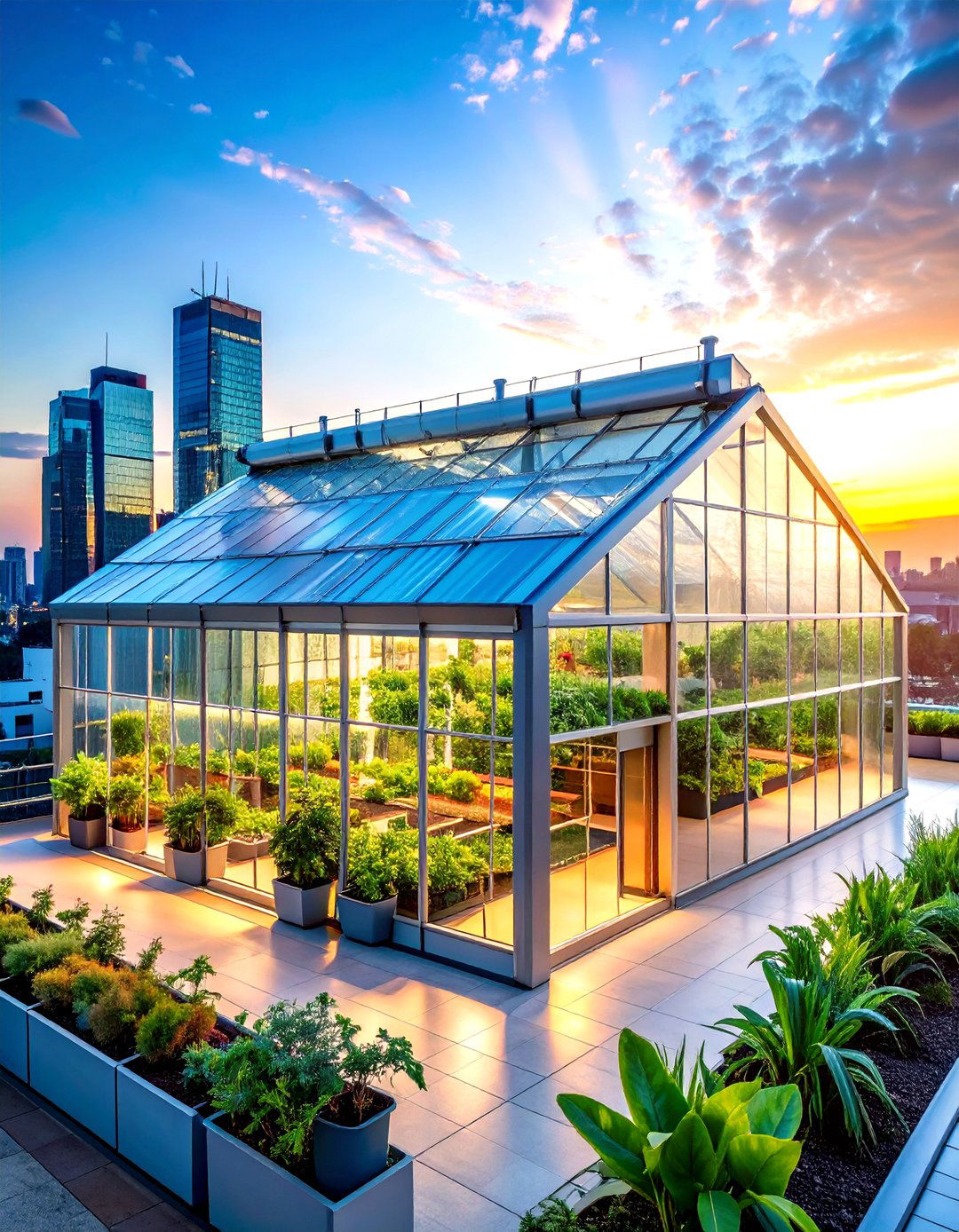
Smart automated rooftop greenhouses integrate Internet of Things technology with advanced sensors and control systems that manage all growing conditions remotely through smartphone applications. These intelligent structures feature automated ventilation, irrigation, heating, and cooling systems that respond to real-time environmental data and weather forecasts automatically. The technology includes soil moisture sensors, atmospheric monitoring equipment, and predictive analytics that optimize resource usage while maintaining perfect growing conditions for specific plant varieties. Smart rooftop greenhouses typically incorporate voice control systems, automated harvesting alerts, and energy management features that coordinate with building systems for maximum efficiency. The automation reduces manual labor requirements while ensuring consistent plant care, making these high-tech growing environments perfect for busy urban dwellers who want fresh produce without daily maintenance demands.
6. Solar-Powered Rooftop Greenhouse
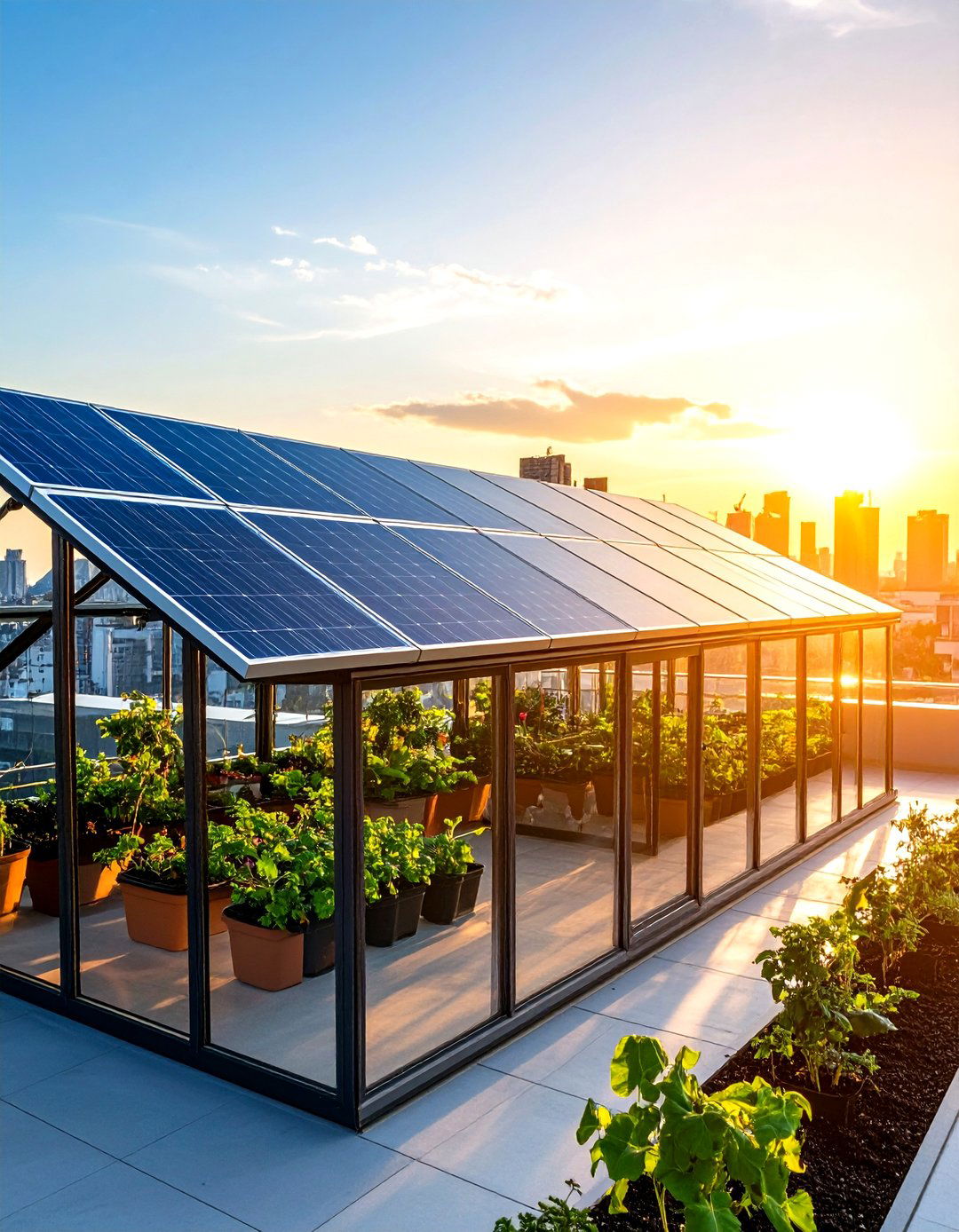
Solar-powered rooftop greenhouses combine sustainable energy generation with food production through integrated photovoltaic panels and renewable energy systems that power all greenhouse operations independently. These eco-friendly structures feature solar collectors for heating, battery storage systems for continuous operation, and energy-efficient components that minimize power consumption while maximizing growing potential. The design incorporates transparent solar panels that generate electricity while allowing adequate light penetration for plant growth, supplemented by traditional panels for additional power generation. Solar rooftop greenhouses typically include backup heating systems, automated energy management, and grid-tie capabilities that allow excess energy production to benefit the broader building or neighborhood. The renewable energy approach eliminates ongoing electricity costs while reducing carbon footprint, creating truly sustainable urban growing environments that demonstrate environmental stewardship.
7. Lean-To Rooftop Greenhouse
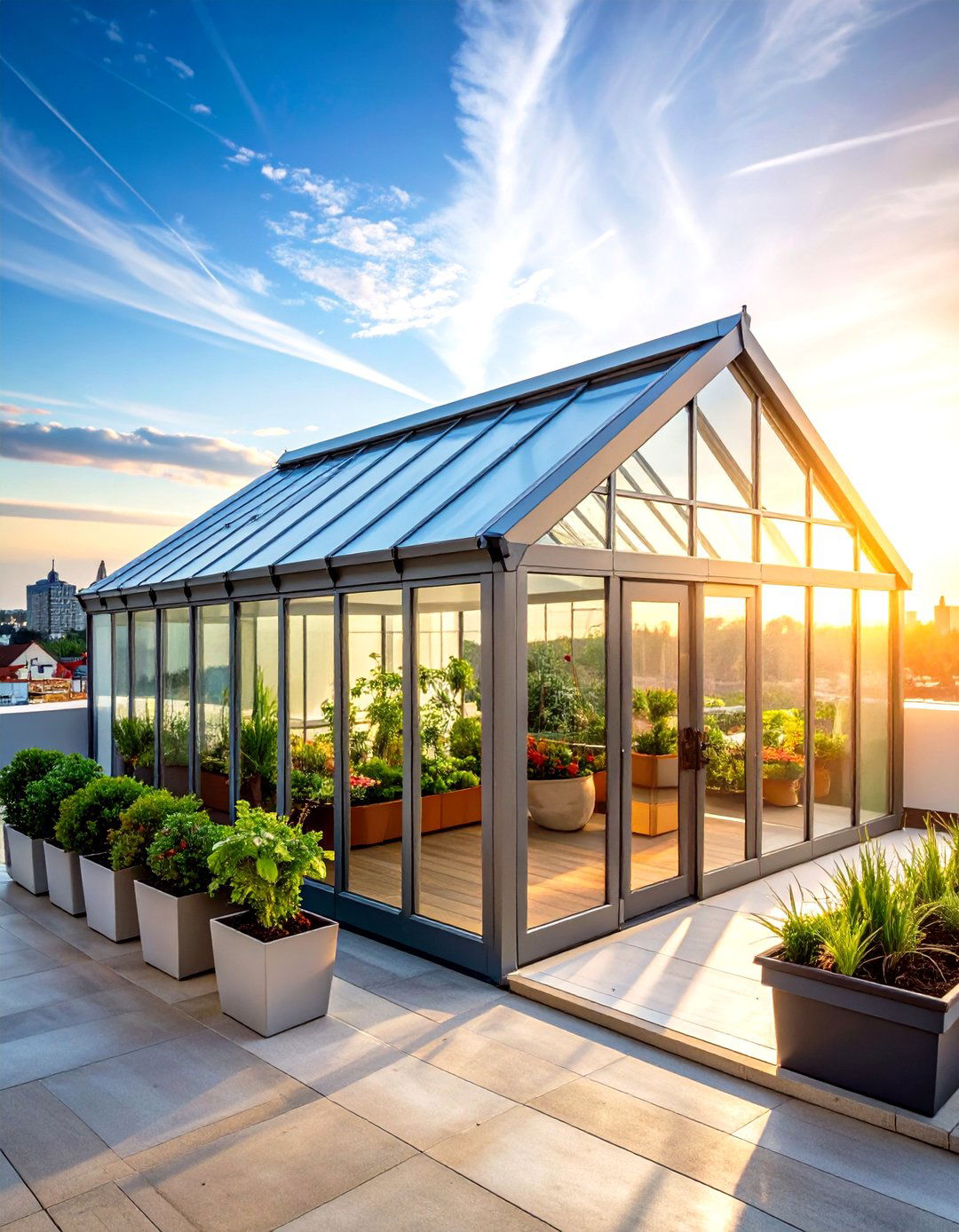
Lean-to rooftop greenhouses attach to existing rooftop structures or building walls, creating space-efficient growing environments that utilize existing architectural elements for support and weather protection. These practical designs feature single-slope roofing that directs water runoff effectively while maximizing interior growing space through efficient use of vertical wall areas for support and thermal mass. The attached design typically includes direct access from building interiors, shared utilities for convenient water and electrical connections, and integrated ventilation that coordinates with existing building systems. Lean-to rooftop greenhouses often incorporate the building wall as a heat sink that absorbs solar energy during the day and releases warmth during cooler periods, extending growing seasons naturally. The cost-effective approach reduces construction requirements while creating functional growing spaces that integrate seamlessly with existing rooftop infrastructure and building aesthetics.
8. A-Frame Rooftop Greenhouse
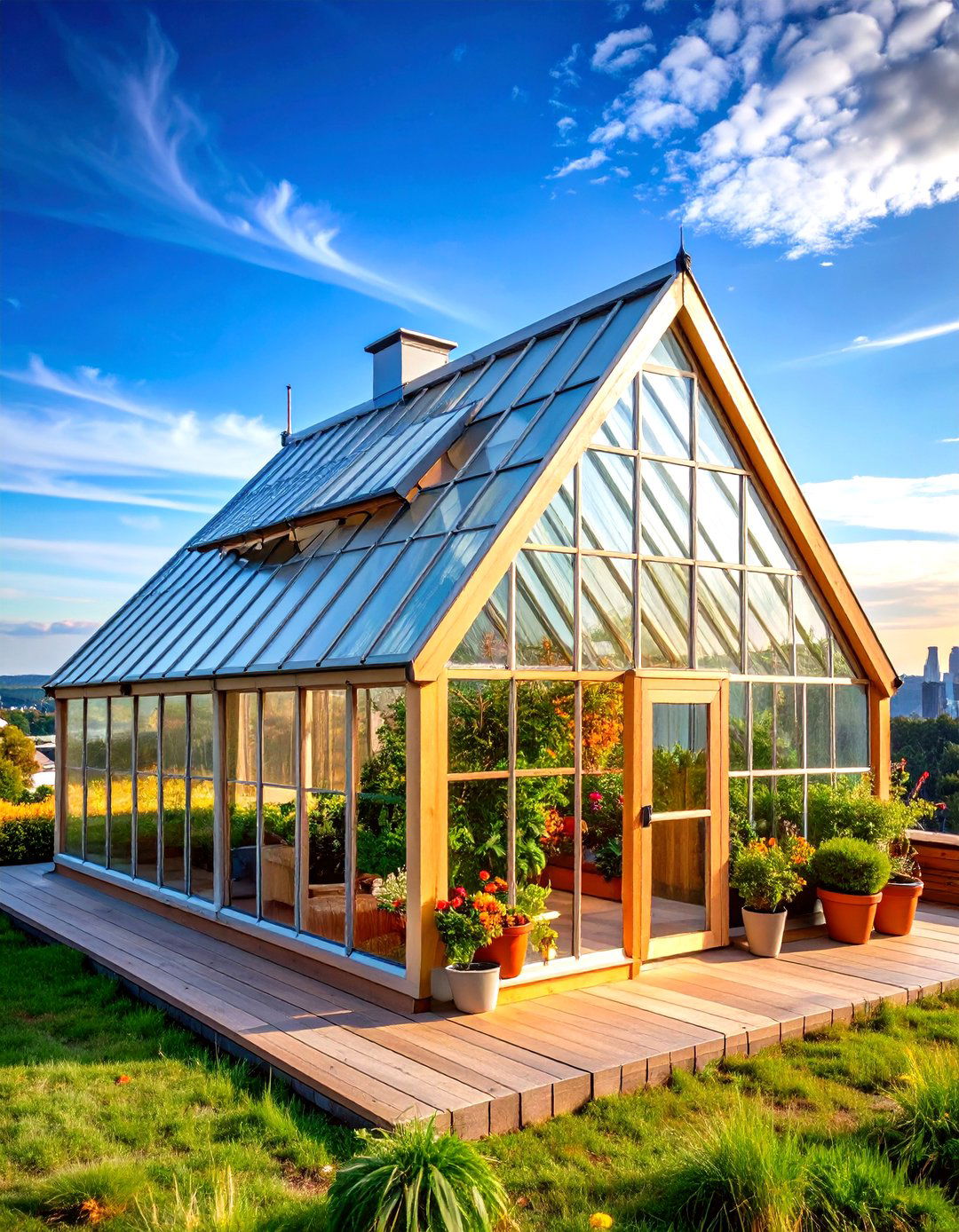
A-frame rooftop greenhouses feature distinctive peaked architecture that efficiently sheds rain and snow while providing excellent vertical growing space and natural ventilation through the triangular design. These traditional-style structures incorporate steep-angled roofing that maximizes interior headroom for tall plants and vertical growing systems while creating optimal drainage and structural strength. The peaked design typically includes ridge ventilation systems, gable-end access doors, and interior growing benches that utilize the full height potential of the triangular space effectively. A-frame rooftop greenhouses often feature traditional materials like wood framing with glass or polycarbonate panels that create classic greenhouse aesthetics while providing modern growing capabilities. The timeless architecture complements various building styles while offering practical benefits including excellent light distribution, natural air circulation, and efficient water management that supports diverse growing applications throughout changing seasons.
9. Quonset Hoop Rooftop Greenhouse
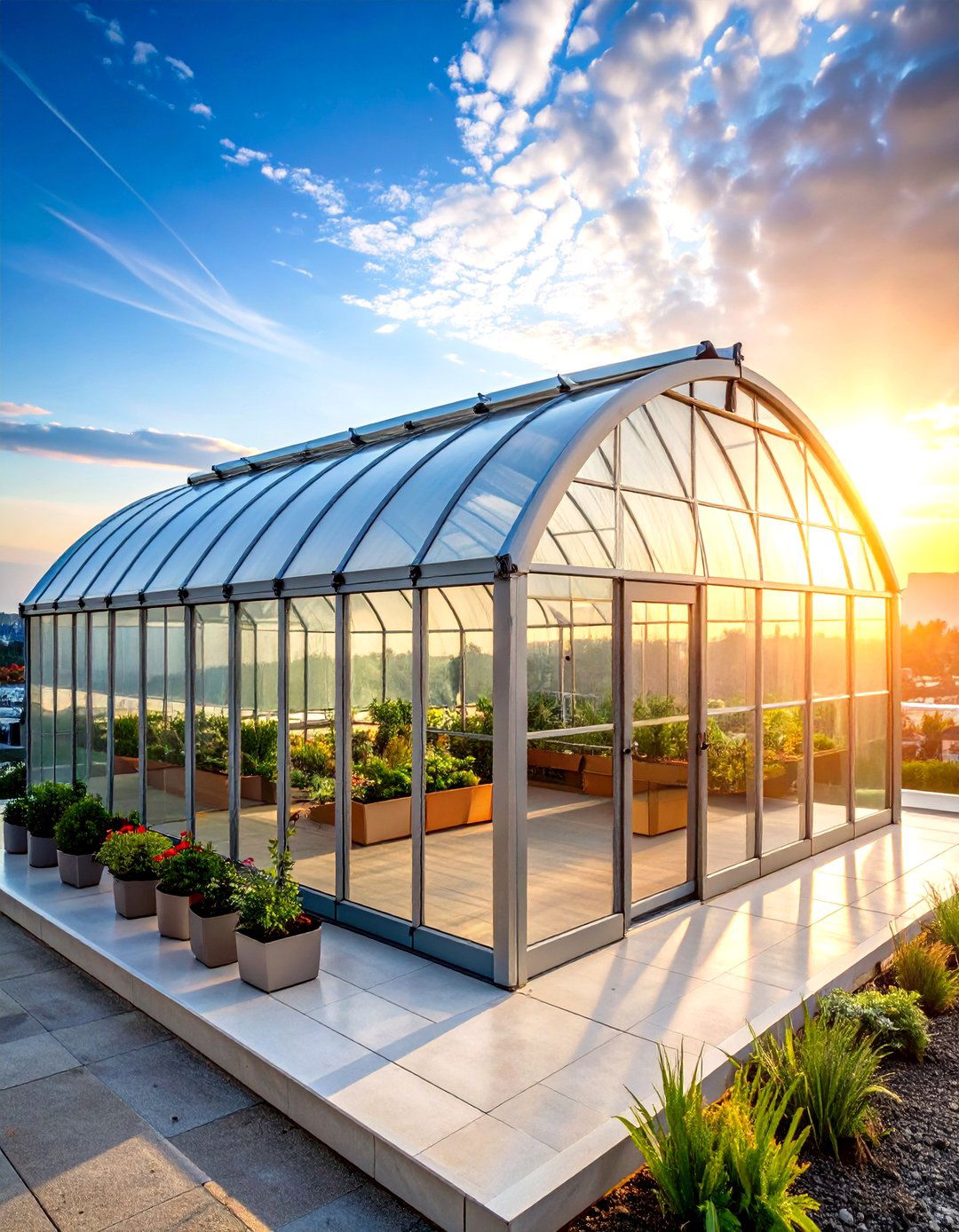
Quonset hoop rooftop greenhouses utilize curved arch construction that provides excellent wind resistance and maximum interior growing space without interior support columns or beams. These efficient structures feature semicircular metal framework covered with polycarbonate panels or greenhouse film that creates optimal growing environments while minimizing construction complexity and material costs. The curved design promotes natural air circulation patterns and even temperature distribution throughout the growing space while providing excellent structural strength against rooftop wind loads. Quonset rooftop greenhouses typically include roll-up side ventilation, end-wall access doors, and flexible interior arrangements that accommodate various growing systems from ground beds to hydroponic installations. The simple construction makes these greenhouses popular for DIY installations while the efficient design provides excellent growing results for vegetables, herbs, and flowers in urban rooftop environments.
10. Victorian-Style Rooftop Greenhouse
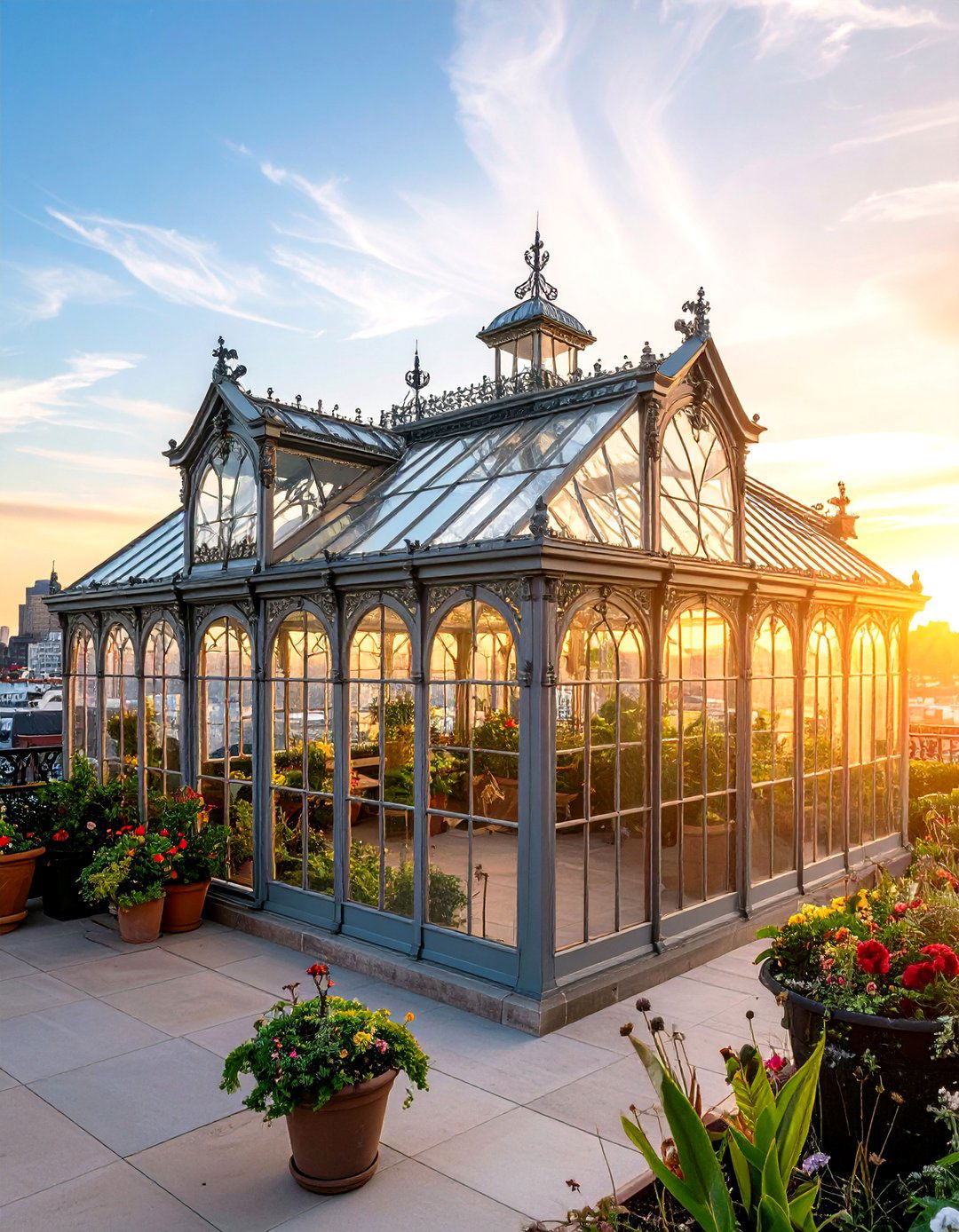
Victorian-style rooftop greenhouses combine ornate architectural details with functional growing spaces through elaborate ironwork, decorative glass panels, and traditional craftsmanship that creates elegant garden retreats. These sophisticated structures feature intricate ridge cresting, ornamental finials, and detailed framework that reflects classical greenhouse design while incorporating modern growing technologies and climate control systems. The traditional styling typically includes leaded glass panels, copper or cast-iron framework, and period-appropriate hardware that creates authentic Victorian aesthetics while providing excellent growing conditions. Victorian rooftop greenhouses often incorporate formal growing arrangements, decorative plant displays, and luxury amenities that transform functional growing spaces into beautiful garden rooms for relaxation and entertainment. The elaborate design makes these greenhouses stunning architectural features that enhance property values while providing sophisticated environments for cultivating exotic plants, orchids, and specialty crops that require controlled growing conditions.
11. Aquaponic Rooftop Greenhouse

Aquaponic rooftop greenhouses integrate fish cultivation with plant production through symbiotic systems where fish waste provides natural fertilizer for plants while plants filter water for fish habitats. These innovative facilities feature fish tanks, biofilter systems, and growing beds connected through recirculating water systems that create sustainable closed-loop food production environments. The design typically incorporates multiple fish species tanks, gravel bed filters, and diverse growing areas that support leafy greens, herbs, and fruiting plants while maintaining optimal conditions for fish health and growth. Aquaponic rooftop greenhouses include water heating systems, aeration equipment, and monitoring technology that tracks water quality, nutrient levels, and system balance automatically. The sustainable approach produces both protein and vegetables while using minimal external inputs, creating highly productive urban farming systems that demonstrate regenerative agriculture principles while providing fresh food throughout the year.
12. Slant-Roof Rooftop Greenhouse
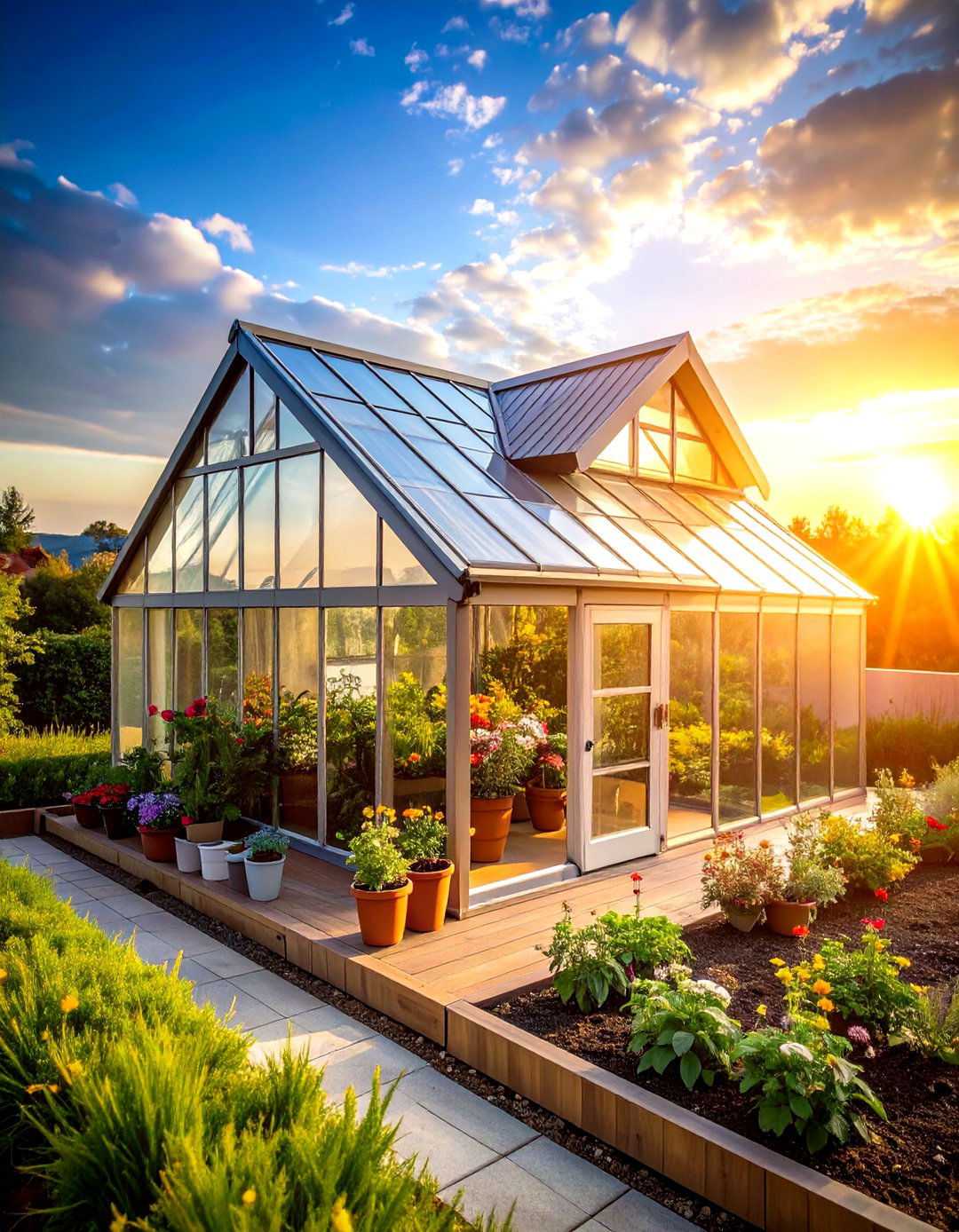
Slant-roof rooftop greenhouses feature single-slope architecture that optimizes solar orientation while providing efficient water drainage and maximum growing space within compact footprints. These practical structures incorporate angled roofing that faces optimal sun exposure directions while creating interior spaces with gradually changing heights that accommodate various plant sizes and growing systems effectively. The single-slope design typically includes automated ventilation systems, integrated guttering, and flexible interior layouts that support both horizontal and vertical growing approaches. Slant-roof rooftop greenhouses often feature magnetic attachment systems for shade cloth, modular growing benches, and weather-resistant construction that withstands urban rooftop conditions while maintaining optimal growing environments. The efficient design maximizes usable interior space while minimizing material requirements, making these greenhouses cost-effective solutions for urban food production and ornamental growing applications in space-constrained rooftop environments.
13. Multi-Tier Rooftop Greenhouse

Multi-tier rooftop greenhouses incorporate multiple growing levels through sophisticated shelving systems, hanging gardens, and stacked growing platforms that dramatically increase planting capacity within limited rooftop footprints. These space-maximizing structures feature adjustable growing shelves with individual lighting systems, irrigation networks, and climate zones that support diverse plant varieties at different vertical levels simultaneously. The tiered design typically includes automated vertical growing systems, rotating plant displays, and specialized growing zones optimized for seedlings, mature plants, and specialty crops. Multi-tier rooftop greenhouses incorporate advanced environmental controls that manage light, temperature, and humidity independently for each growing level while maintaining overall system efficiency. The vertical approach allows intensive cultivation of herbs, microgreens, vegetables, and flowers while creating stunning visual displays that demonstrate innovative urban agriculture techniques and sustainable food production methods in metropolitan environments.
14. Community Rooftop Greenhouse
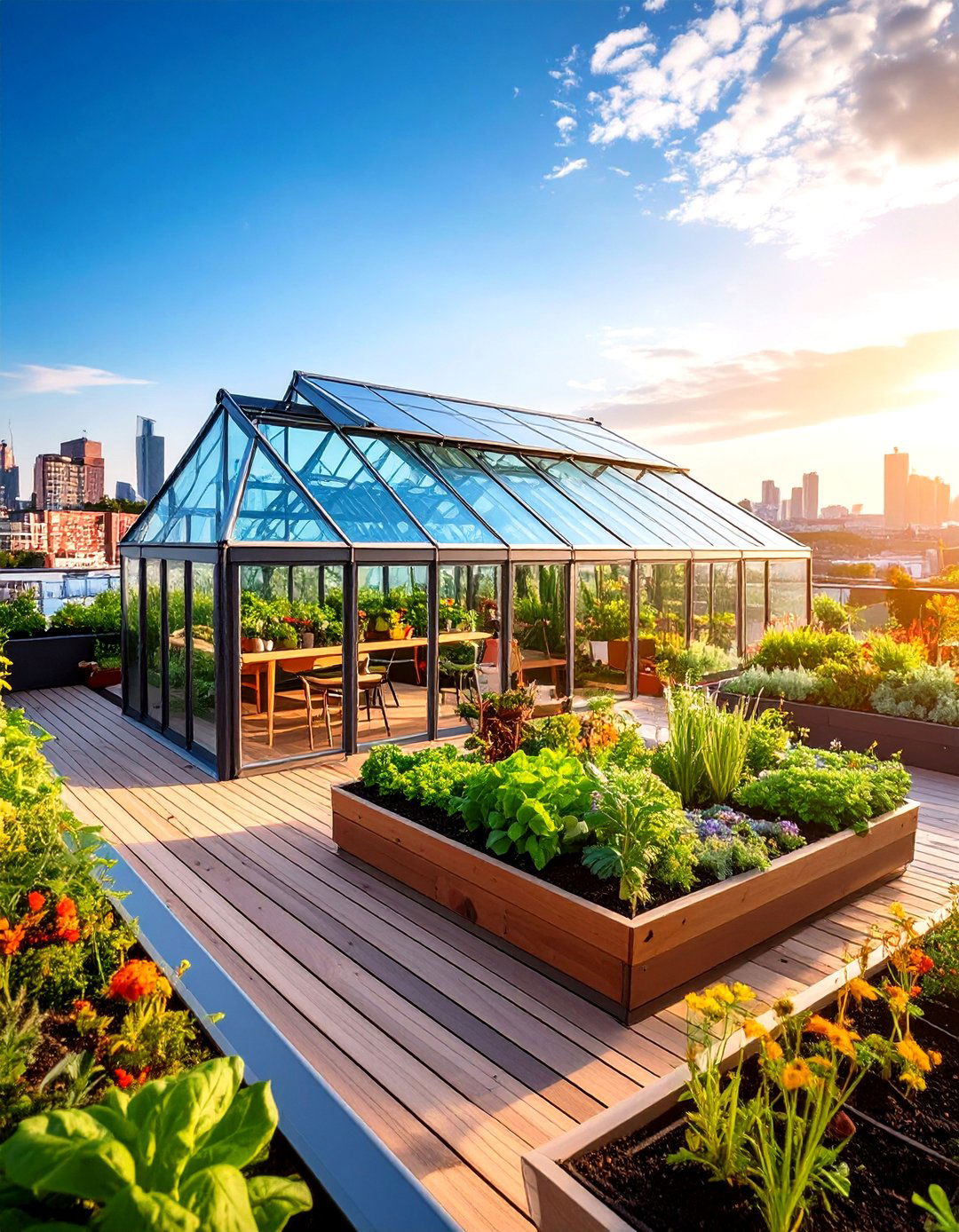
Community rooftop greenhouses create shared growing spaces that bring neighbors together through collaborative gardening projects, educational programs, and social gathering areas integrated with productive growing environments. These social structures feature individual growing plots, communal workspace areas, and meeting spaces that foster community connections while providing fresh food access for urban residents. The community design typically includes shared tool storage, educational demonstration areas, and accessible pathways that accommodate gardeners of all ages and abilities safely. Community rooftop greenhouses often incorporate rainwater harvesting systems, composting facilities, and renewable energy features that demonstrate sustainable practices while providing hands-on learning opportunities. The collaborative approach builds social capital while addressing urban food security, creating green spaces that enhance neighborhood livability while providing practical benefits including fresh produce, environmental education, and community resilience in urban environments where green space is limited.
15. Commercial Rooftop Greenhouse

Commercial rooftop greenhouses feature large-scale production systems designed for restaurants, markets, and food service operations that require consistent supplies of fresh herbs, vegetables, and specialty crops year-round. These professional facilities incorporate industrial-grade climate control systems, automated harvesting equipment, and efficient growing systems that maximize yields while maintaining commercial quality standards. The commercial design typically includes walk-in coolers, processing areas, and packaging facilities that support farm-to-table operations directly from rooftop locations. Commercial rooftop greenhouses feature advanced environmental monitoring, integrated pest management systems, and scalable growing technologies that support diverse crop rotations and seasonal production schedules. The business-focused approach generates revenue while reducing food transportation costs, creating sustainable urban food systems that strengthen local economies while providing superior freshness and quality compared to imported produce from distant growing regions.
16. Portable Modular Rooftop Greenhouse
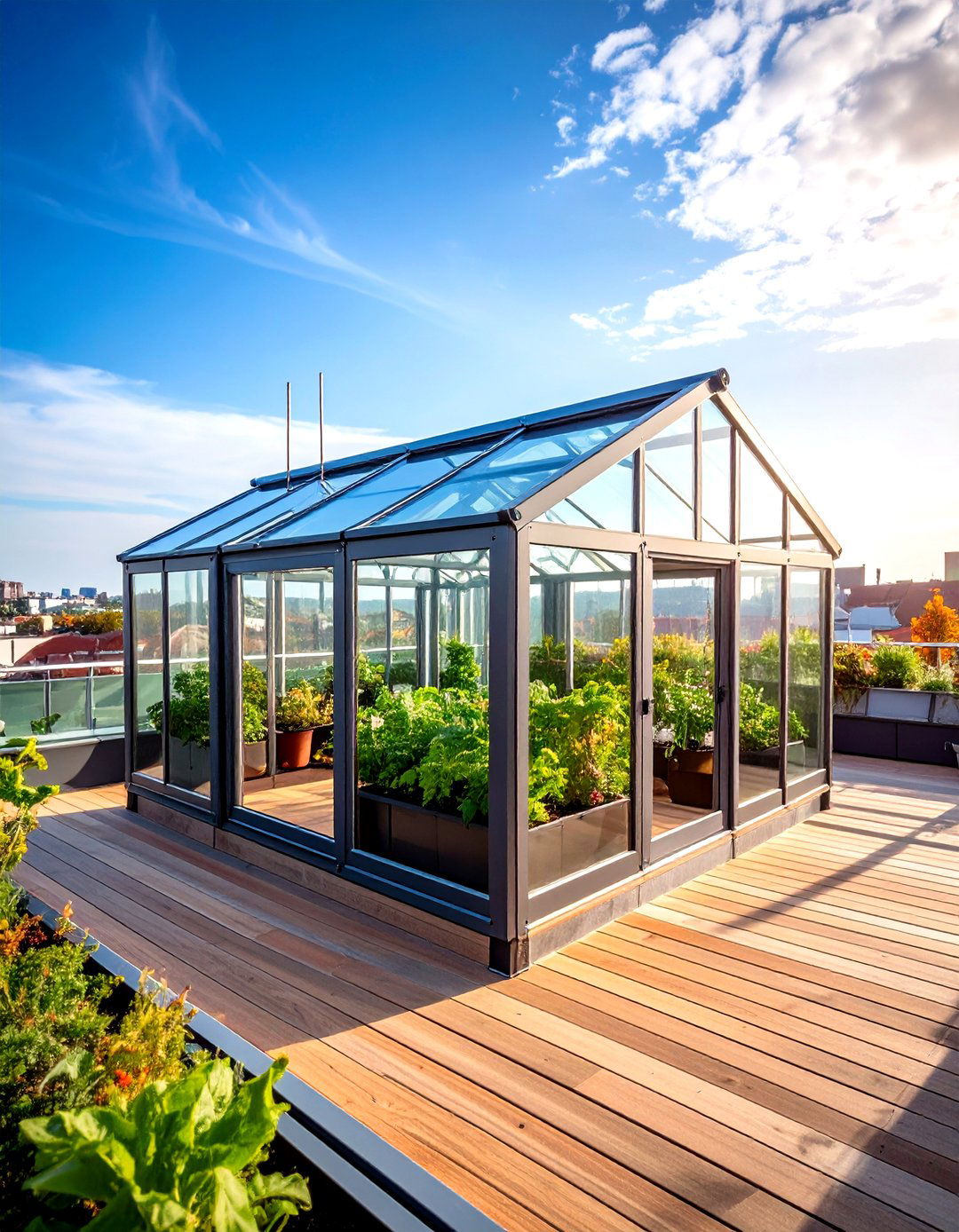
Portable modular rooftop greenhouses utilize prefabricated sections and flexible assembly systems that allow easy installation, reconfiguration, and relocation based on changing needs and rooftop constraints. These adaptable structures feature lightweight frameworks, snap-together panels, and modular growing systems that accommodate various rooftop sizes and configurations without permanent modifications to building structures. The modular design typically includes interchangeable components, expandable frameworks, and portable utilities that support seasonal growing operations or temporary installations. Portable rooftop greenhouses incorporate weather-resistant materials, secure anchoring systems, and efficient assembly methods that enable quick setup while maintaining structural integrity and growing effectiveness. The flexible approach allows experimentation with different growing methods while accommodating rental properties, temporary locations, and evolving urban agriculture needs that require adaptable solutions for changing circumstances and growing requirements.
17. Passive Solar Rooftop Greenhouse
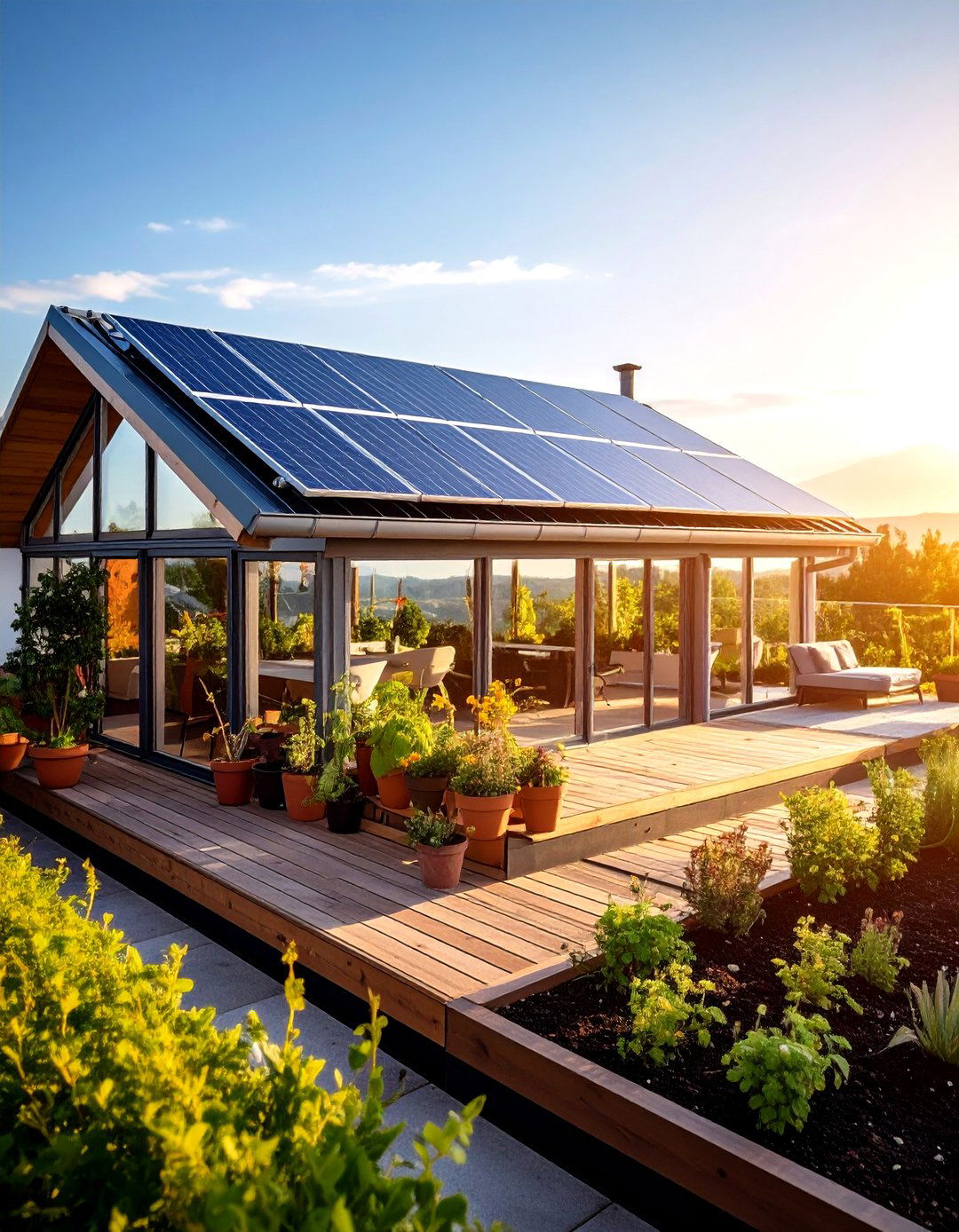
Passive solar rooftop greenhouses harness natural solar energy through strategic orientation, thermal mass systems, and energy-efficient design principles that maintain optimal growing conditions without external energy inputs. These sustainable structures feature south-facing glazing, thermal storage walls, and insulated north walls that capture, store, and distribute solar heat throughout growing spaces naturally. The passive design typically incorporates water-filled thermal mass containers, stone or concrete heat sinks, and automated ventilation systems that regulate temperature through natural convection and thermal dynamics. Passive solar rooftop greenhouses include season extension features, cold frame integration, and natural cooling systems that maintain comfortable growing conditions while minimizing energy consumption. The earth-friendly approach demonstrates sustainable building principles while creating productive growing environments that operate efficiently throughout changing seasons, providing fresh food while reducing environmental impact through renewable energy utilization and resource conservation.
18. Urban Farm Rooftop Greenhouse
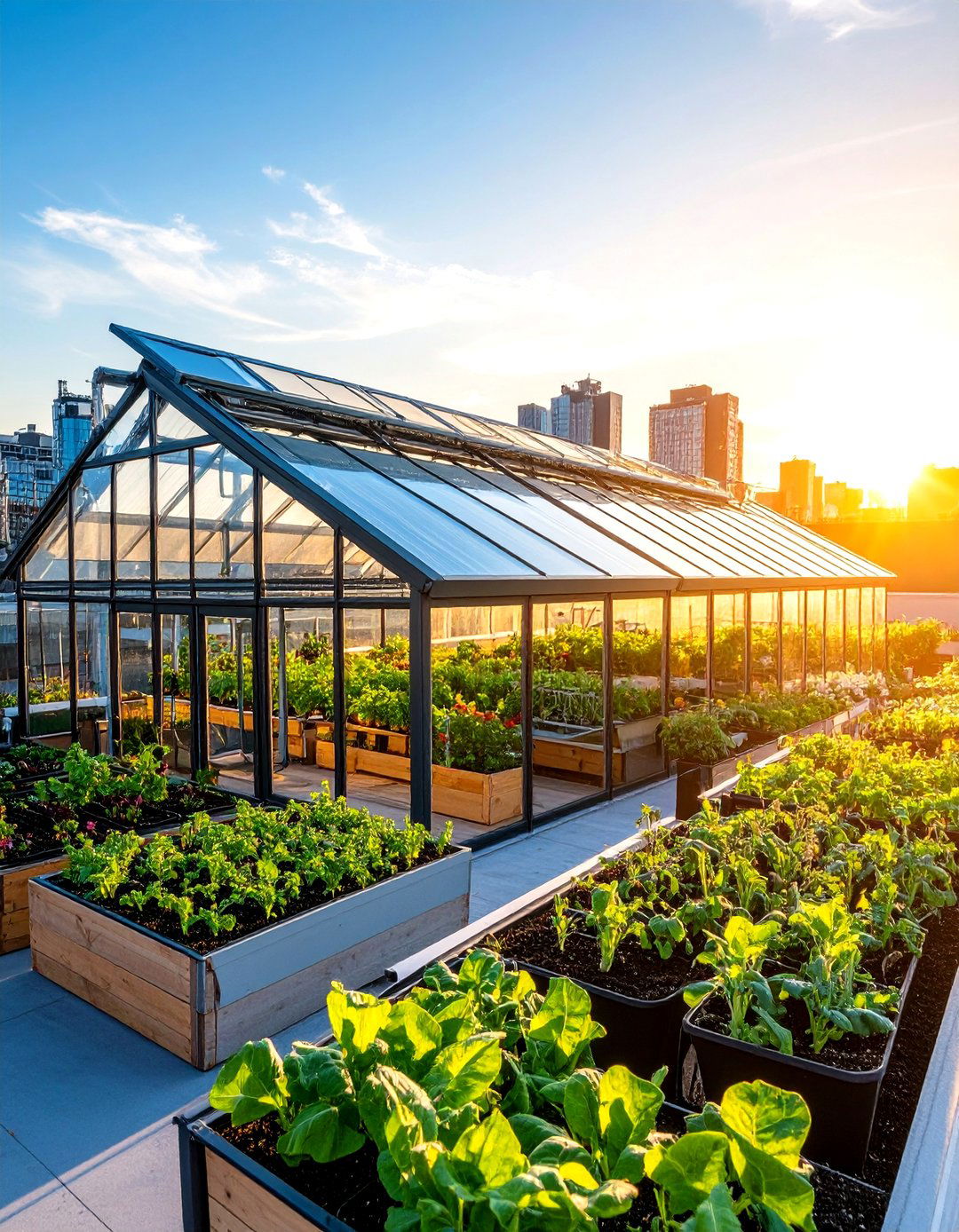
Urban farm rooftop greenhouses integrate with restaurants, grocery stores, and food markets to provide hyperlocal food production that eliminates transportation costs while ensuring maximum freshness and quality for consumers. These commercial facilities feature diverse growing systems, processing areas, and direct-to-consumer sales platforms that create complete urban food systems on building rooftops. The farm design typically includes specialty crop varieties, year-round production schedules, and value-added processing capabilities that support diverse menu requirements and market demands. Urban farm rooftop greenhouses incorporate customer education areas, farm tours, and community engagement programs that connect urban consumers with food production while demonstrating sustainable agriculture practices. The integrated approach strengthens local food systems while reducing environmental impact, creating profitable businesses that enhance neighborhood food security while providing fresh, nutritious produce that supports healthy communities and sustainable urban development initiatives.
19. Research Rooftop Greenhouse

Research rooftop greenhouses serve educational institutions, agricultural organizations, and scientific facilities that conduct plant breeding, growing technique development, and climate adaptation studies in controlled urban environments. These specialized facilities feature precise environmental controls, data collection systems, and experimental growing areas that support agricultural research and innovation development. The research design typically incorporates controlled growing chambers, automated monitoring equipment, and flexible experimental layouts that accommodate diverse research projects and scientific protocols. Research rooftop greenhouses include student learning areas, demonstration plots, and technology testing facilities that advance urban agriculture knowledge while training future agricultural professionals. The educational approach contributes to agricultural science while demonstrating innovative growing techniques, creating knowledge that benefits broader urban farming communities while addressing food security challenges through scientific advancement and practical innovation in sustainable food production systems.
20. Hybrid Multi-System Rooftop Greenhouse
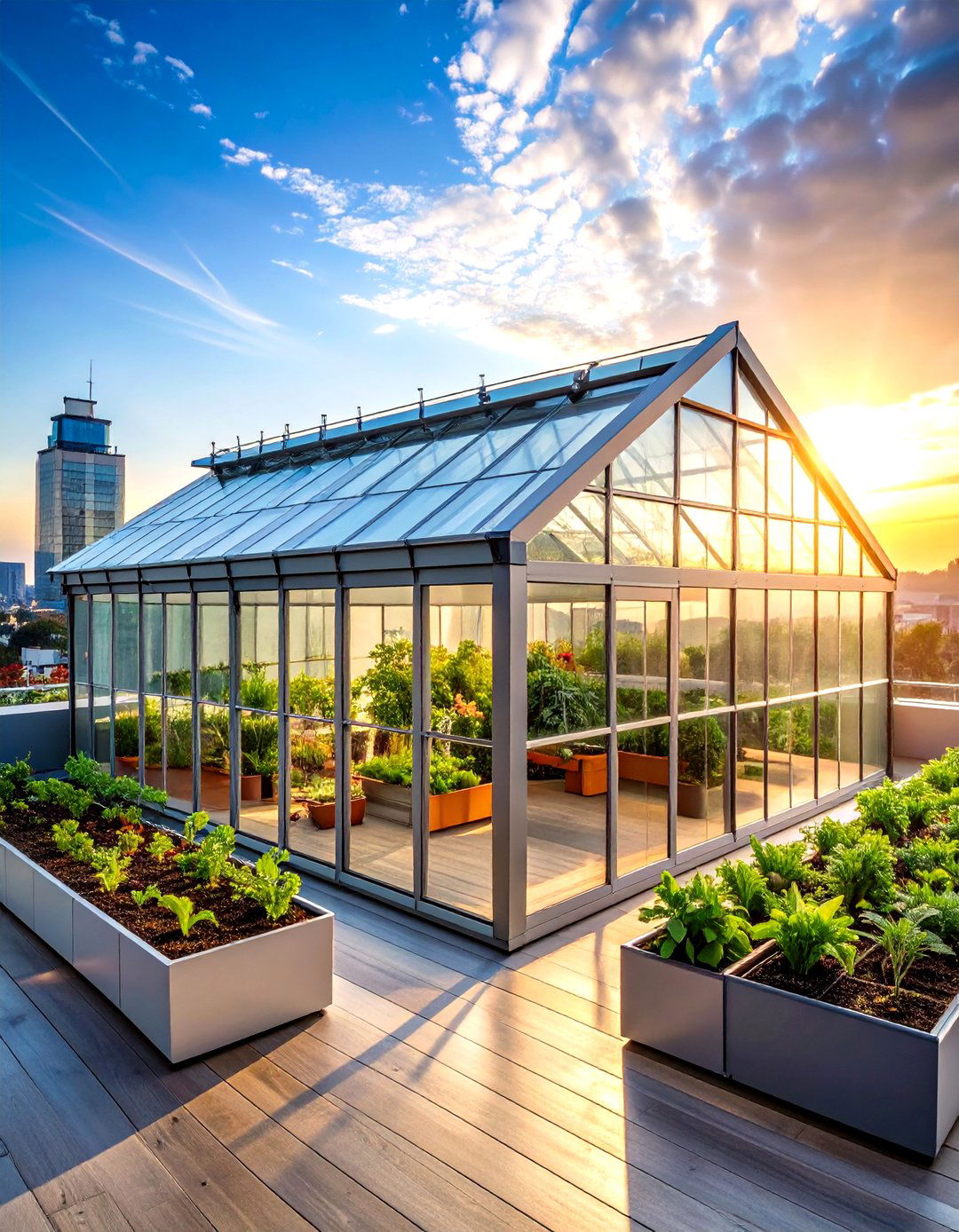
Hybrid multi-system rooftop greenhouses combine various growing methods including hydroponics, aquaponics, soil cultivation, and vertical systems within single integrated facilities that maximize diversity and productivity. These comprehensive structures feature distinct growing zones with specialized environmental controls, irrigation systems, and management protocols that optimize conditions for different plant varieties and growing approaches simultaneously. The hybrid design typically incorporates soil beds for root vegetables, hydroponic systems for leafy greens, aquaponic sections for herbs, and vertical towers for climbing plants. Hybrid rooftop greenhouses include central control systems that coordinate all growing methods while maintaining optimal conditions throughout different sections, creating versatile facilities that demonstrate multiple sustainable growing techniques. The diversified approach reduces risk while maximizing learning opportunities, creating productive urban agriculture systems that showcase innovative growing methods while providing fresh food and demonstrating sustainable practices for urban communities.
Conclusion:
Rooftop greenhouses represent transformative solutions for urban agriculture that convert unused building spaces into productive growing environments while addressing food security and sustainability challenges. These innovative structures combine architectural beauty with functional design, offering diverse options from high-tech automated systems to traditional Victorian elegance. Whether pursuing commercial production, community building, or personal growing goals, rooftop greenhouses provide year-round cultivation opportunities that reduce environmental impact while strengthening local food systems and enhancing urban livability through green infrastructure development.



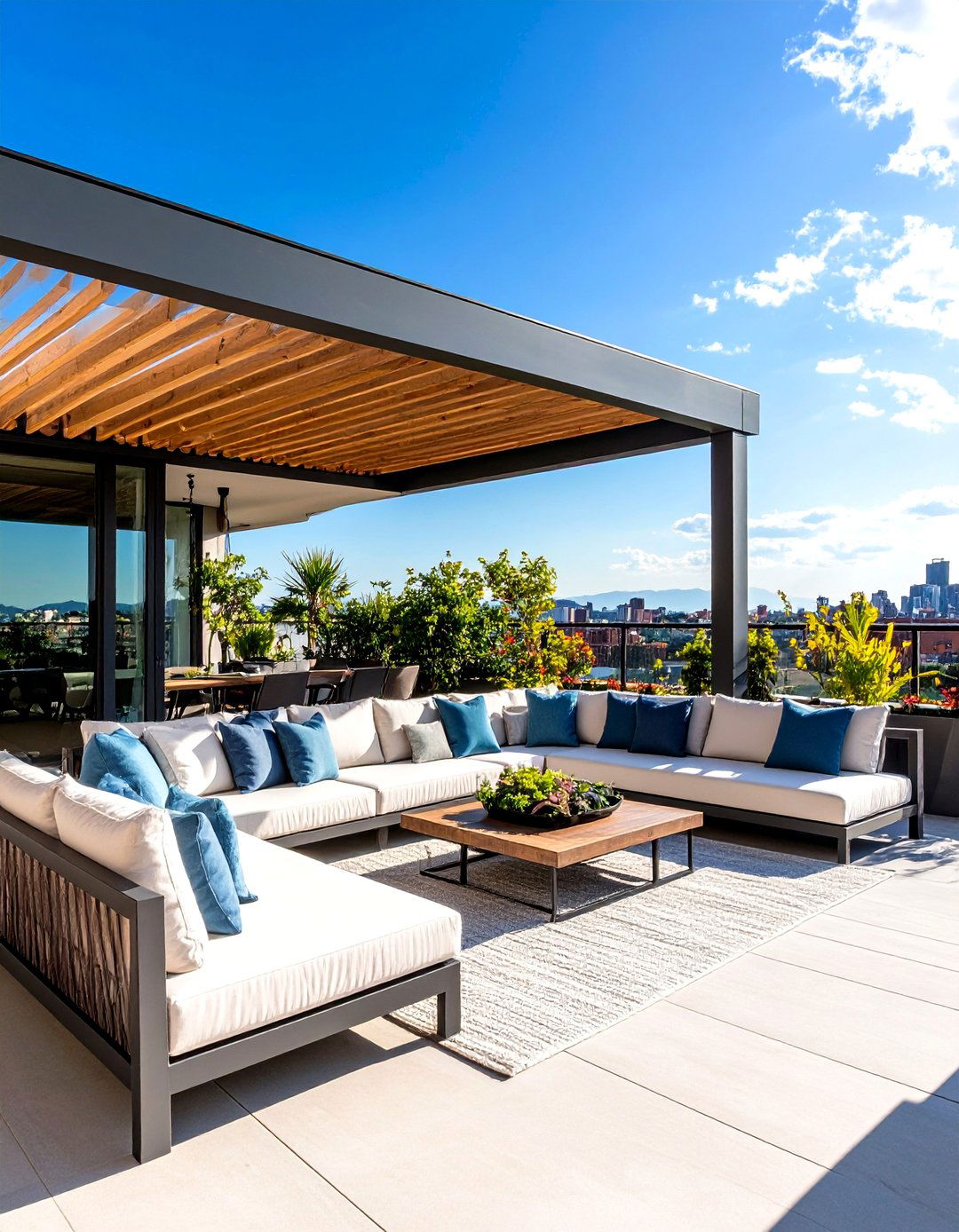

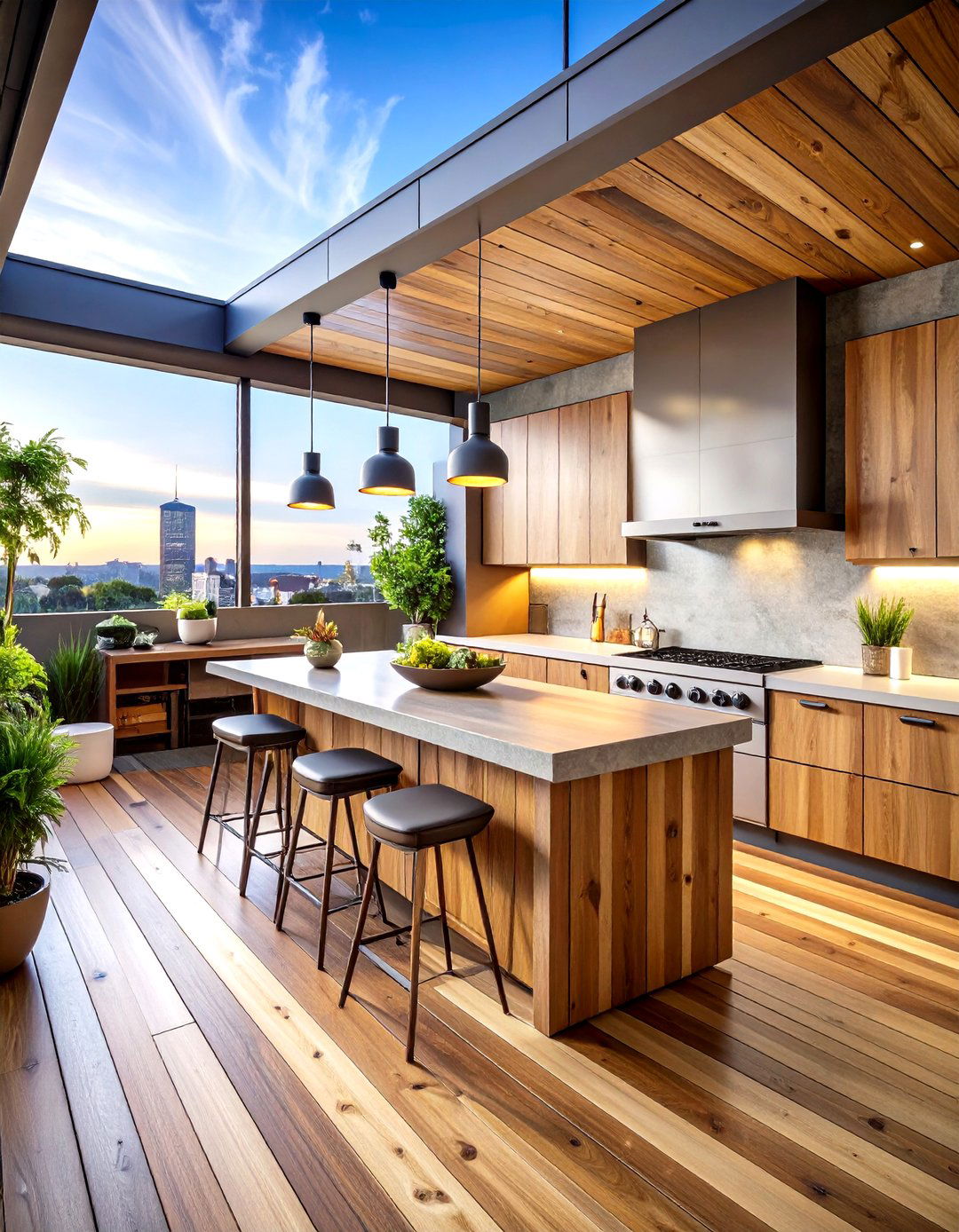



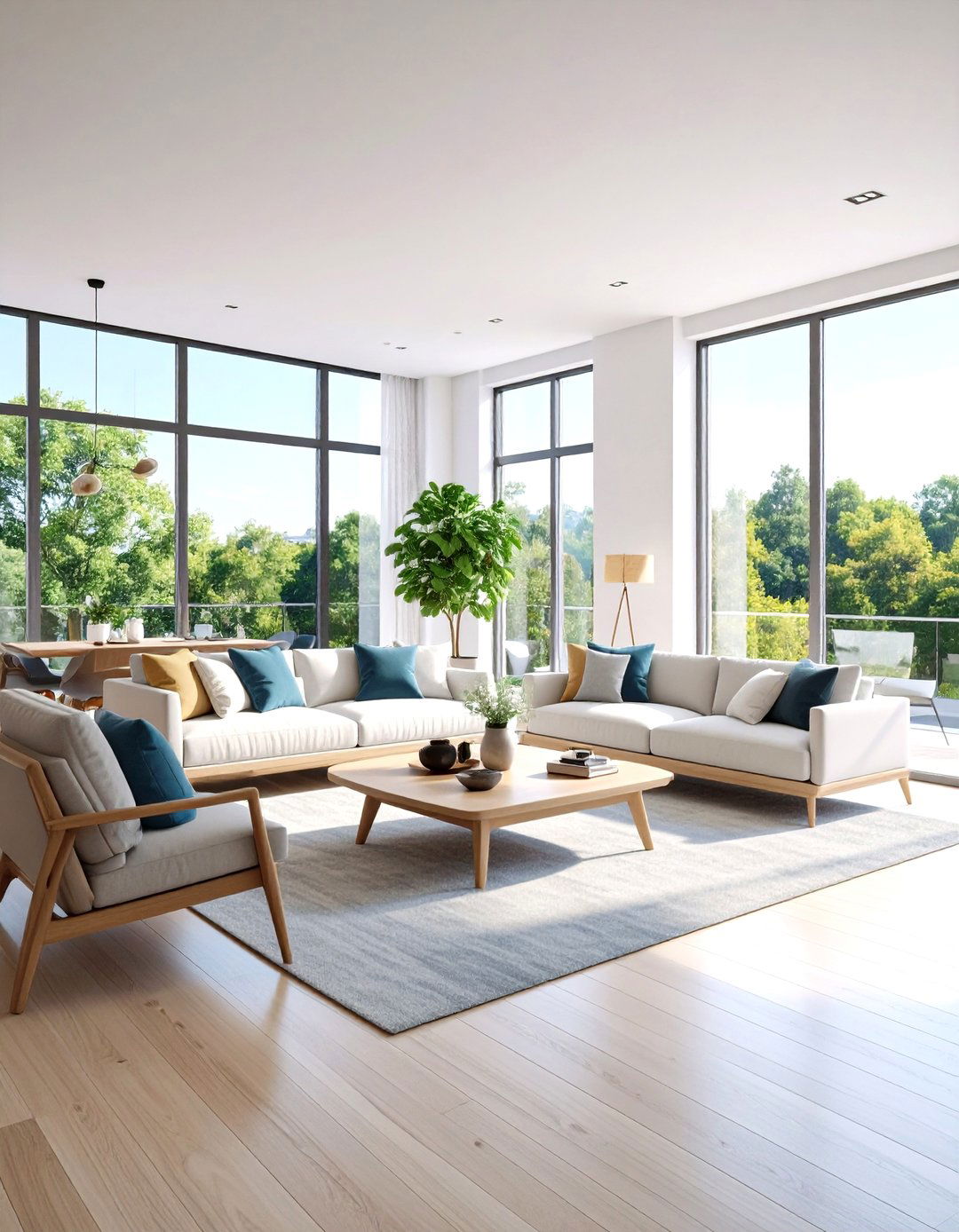

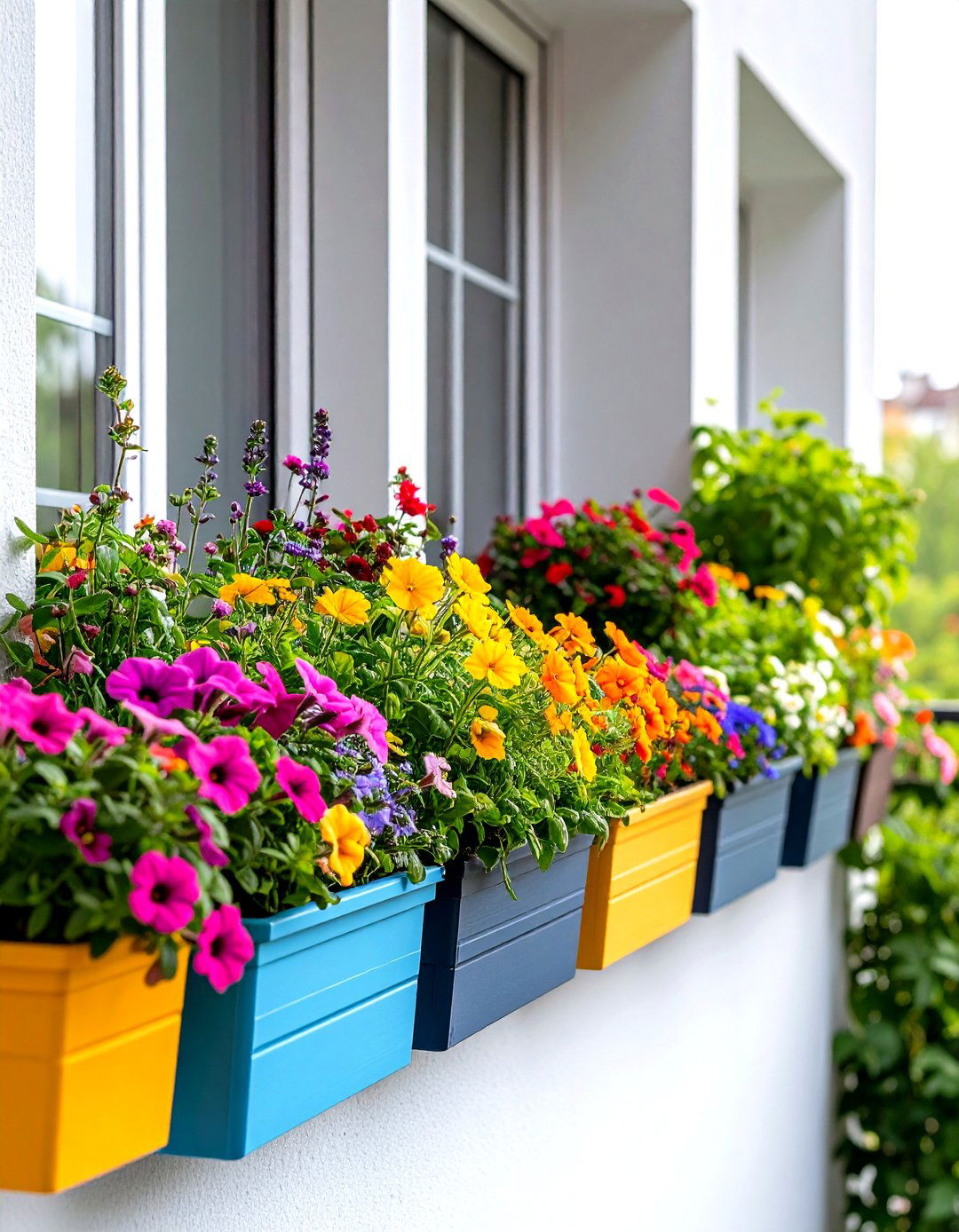
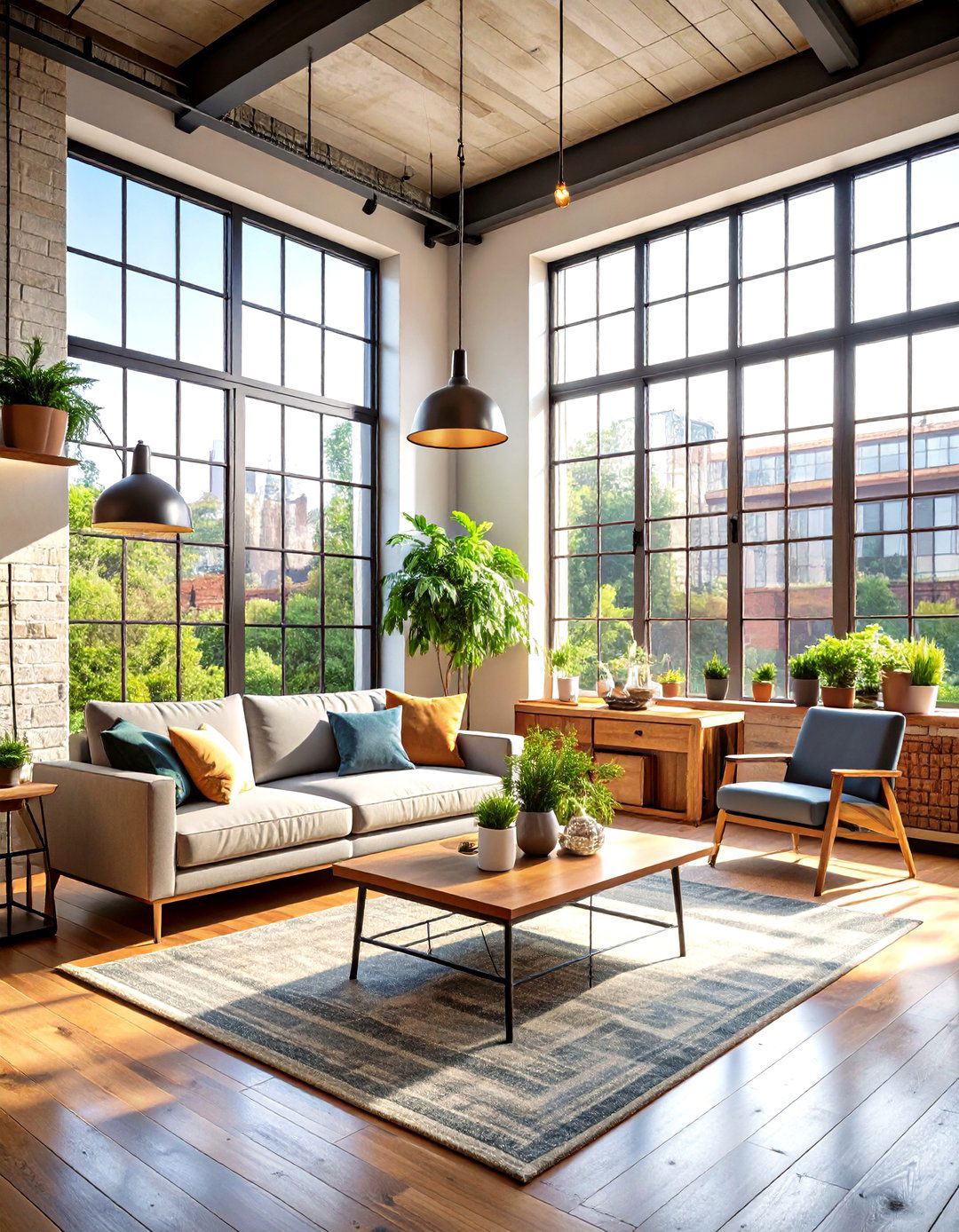
Leave a Reply